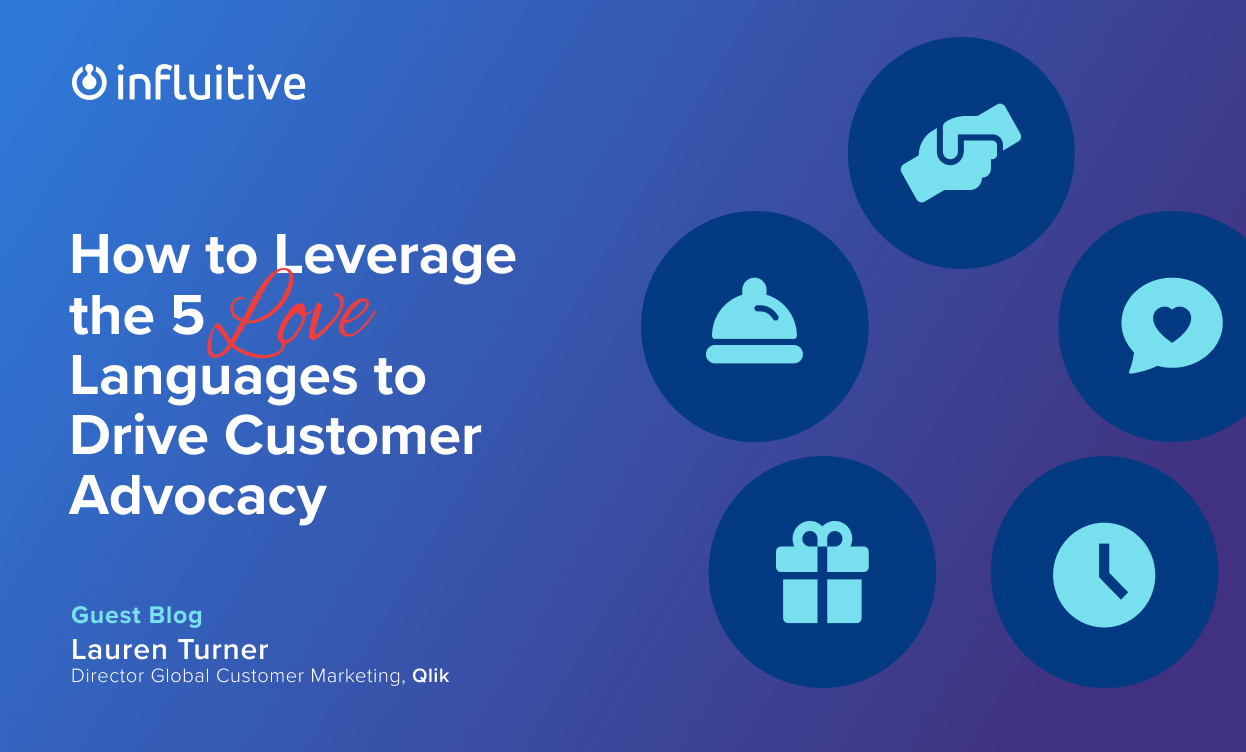You have collaborated with your internal stakeholders, received feedback from your top customers, and together with their insight built your customer community—congratulations!
Now, all that remains (ha, ha!) is to grow advocacy within your community by showing customers your appreciation.
There is a lovely selection of swag and a couple of gift cards to select, and badges for specific accomplishments in your hub, so you’re all set, right?
Nope.
Not by a long shot.
One of the most important parts of growing an effective advocacy program is personalization at scale; e.g. delivering the most relevant message and experience to the right customer at the right time, across all of your customer personas.
Sure, *some* customers are going to be thrilled chasing the latest shiny trinket in your rewards catalog, but you may have noticed that some of your most hard-core advocates rarely redeem rewards, if they even do at all. What’s going on here?
These customers speak a different love language.
The Five Love Languages

In brief, there are multiple ways that people prefer to feel love and appreciation: words of affirmation, acts of service, gifts, quality time and physical touch; and what works for one person might not work for another.
Have you ever had a family member bring you a favorite snack from the grocery store, but what you *really* wanted was for them to put the dishes away without you having to ask? If your love language is acts of service, this scenario will be very familiar to you.
You can find out what your main love language is by taking this brief quiz—most people have a primary love language, followed by a few secondary ones.
Now, let’s take the five love languages and put them in the context of how you can use them to drive customer loyalty and engagement.
Love Language #1: Words of Affirmation.

This is probably one of the easiest love languages to address for customers, as it costs nothing except a keen pair of eyes and a few minutes to reach out to your customer.
All you must do is notice when a customer exhibits a rewardable behavior or reaches a notable milestone, such as:
- Achieving a new level in your gamified platform
- Completing a particularly valuable act of advocacy
- Getting promoted
- Finishing in the top X% of activity for the month
Send that person a quick email, video card, and/or post the kudos publicly on your community or social media.
Not only will these affirmation-motivated customers feel appreciated for their efforts, your public kudos may also motivate other customers to do that same act of advocacy, because it’s their love language, too!
Love Language #2: Acts of Service

Customers motivated by acts of service want you to make their life easier by simplifying a task, saving them time, solving a problem or otherwise reducing a source of frustration.
If they have a technical problem that you can solve on your own, great!
If not, this is an excellent opportunity to collaborate with other stakeholders in your organization to offer a great “act of service” that shows customer appreciation.
Some examples:
- Enabling a particular customer to “jump the line” for a support/helpdesk issue
- A consultation with a subject matter expert or executive in your organization that your customer typically wouldn’t be able to access
- Training for your customer and/or their team that might not typically be included in their regular contract
Love Language #3: Gifts

Rewards are typically part of most advocacy programs, so if you have a great selection of physical rewards or gift cards, this is a great motivator for a customer who has gifts as their love language.
The best way to make an impact here is to offer a gift that is as personalized to the customer’s interests as possible.
Maybe you found out from an earlier survey or activity challenge that your customer Jane Smith’s favorite candy is M&Ms—can you go to a website and order custom M&Ms with Jane’s name on it?
Or, if your customer hasn’t redeemed anything from your rewards catalog lately but has done something particularly valuable, why not send a surprise perk?
These types of gestures can go a long way to impressing a gift-motivated customer.
Be careful that your advocacy program doesn’t have *too* many gift-motivated customers, though.
You need to be certain that your customers receive inherent value from your program and genuinely care about your company; otherwise, you will be stuck with an expensive, transactional relationship that ends as soon as your rewards budget gets cut.
One way to potentially identify these types of customers is to create a “just rewards” badge that gets automatically awarded if the customer cashes in on a certain number of awards within a short timeframe.
For the customer– yay, they have another badge! For you, there’s a visible indicator that this person’s motivations *may* not be as altruistic as you’d like to believe, especially if they’re cashing in on a regular basis month after month.
(Pro tip: if you have a customer who usually does not redeem rewards suddenly redeeming a lot; they may be preparing to leave their organization and are “cashing out” before they go.
Reach out to these customers and find out what’s going on—you may have an advocate who helps your company land an account at their new job!)
Love Language #4: Quality Time

Customers motivated by quality time often want to get to know you as an individual, network with other customers, and more than anything else, feel understood and listened to.
Here are some quick ways to connect with this type of customer:
If you are interviewing this customer for a case study or some other formal act of advocacy, dedicate the first chunk of time to simply getting to know the customer better as a person.
Ask about their hobbies, favorite movies, vacation plans…basically any (politically safe) non-work-related topic that lets them know that you not only appreciate them for what they do on behalf of your organization, but that you genuinely are interested by who they are as an individual.
Include them in a customer advisory board, beta test, or other exclusive small group of customers whose primary purpose is to provide feedback to your organization.
Let them know that *their* voice matters more than the average customer, and that their suggestions will be taken seriously.
If they contribute an idea for a feature or new product, keep them in the loop on how that suggestion is being considered and/or prioritized and used.
Email this person for no other reason than just to say hello and catch up on what they’re doing. It’s a great way to let them know you care, even if they haven’t done anything notable recently.
Invite this person to customer events where they can take an active role in the discussion; hosting a webinar where they share their expertise, speaking at an event, town halls, show and tell sessions, and mentorship programs are all ways that a customer who thrives on quality time can feel important and appreciated.
Love Language #5: Physical Touch

Obviously, you are looking to help your customer feel appreciated, not creeped on or exposed to COVID, so be very judicious about how you apply this love language.
Unless you know this person very well, are friends outside of work (quick test: have you ever hung out with this person at a non-work related event? Do you have each other’s phone number? Do you know this person’s birthday from memory?) and are 100% certain that they would appreciate a handshake or hug from you – DON’T.
DO NOT.
SERIOUSLY.
However, there are some proxies for physical touch that can be applicable here:
- SWAG from your company (especially if the item is something tactile like a plush toy, a puzzle, or something else that is typically picked up and handled) is a great way for a touch-motivated person to feel connected to your brand.
- Fun online group activities (e.g. virtual wine tasting, virtual escape rooms, virtual game shows where everyone interacts with real or virtual objects, and can give each other “high fives” or other representations of touch).
- Using tactile language in your communications (“sending you a long-distance high-five for your recent accomplishment!)
Your customers add so much to your company’s stories, product development, and ultimately, bottom line.
Advocacy programs help to curate and nurture these customer relationships, largely by giving back to your advocates and showing your organization’s appreciation of the work they do.
If you take the time to learn the love languages of your customers; words of affirmation, acts of service, gifts, quality time and physical touch, you’ll be able to not only reward them for the acts of advocacy they’ve done on your company’s behalf, but you’ll be able to do it in a way that reflects how they personally want to be recognized.
By going the extra mile in this way, you’ll strengthen the relationship for the long term, and build even further success.












































